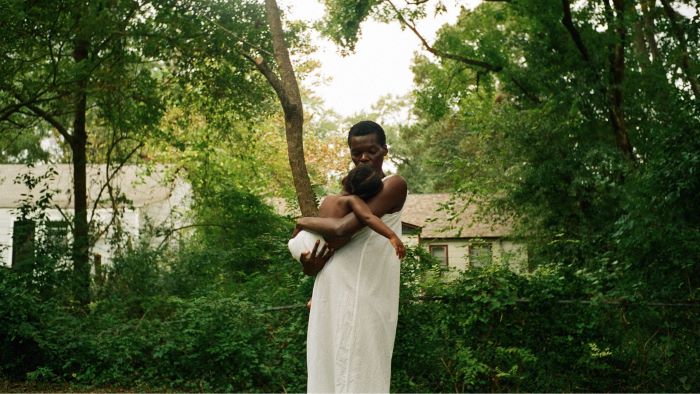Writer/director Raven Jackson’s debut feature reveals a perceptive and immensely talented filmmaker. Filmed in rural Mississippi, the movie takes place over a course of decades, with no pronounced markers of passing time except for clothing, music, cars, and the ages of the main character, Mack (Kaylee Nicole Johnson as the younger Mack and Charleen McClure as the older). The story unfolds nonlinearly as it follows the death of Mack’s mother, Evelyn (Sheila Atim); the birth of Mack’s daughter; and a difficult decision Mack ultimately makes without the film making any declarative judgements or explanations.
The pleasures here are mainly mined from its visual and aural details. In an opening scene, the hands of the young Mack caress the brown scales of a fish as the sounds of insects, birds, frogs and an incoming storm hum in the distance. We glimpse fragmented snapshots of Mack’s Deep-South Black girlhood throughout, like a house on fire—the neighbors try to put it out with buckets of water (the suggestion being they couldn’t expect any firefighters to show up). In one of the more vivid scenes, Mack watches her mother wear a butter yellow-and-white dress as she applies red lipstick in a white wood-walled bathroom. It’s one of the many exemplary uses of color and lighting.
Later, her mother is dancing at a party, and Mack witnesses the intimacy between men and women as Gladys Knight and the Pips’ “If I Were Your Woman” plays on the turntable and Roberta Flack sings her mournful rendition of Leonard Cohen’s “Hey, That’s No Way to Say Goodbye”—a foreshadowing.
The story and its characters have strong relations to the earth and nature. When the older Mack eventually has a baby girl, she tells the newborn, “You are made of dirt, you know that? And water.” The capturing of earthy imagery, like the silt and mud under shallow water, by cinematographer Jomo Fray, who shot on 35mm, makes All Dirt Roads Taste of Salt a unique cinematic gem. Although articles about the film have pointed to Julie Dash’s Daughters of the Dust as an influence, it also seems inspired in part by Terrence Malick, with its textures, long pauses, rhythmic, sometimes opaque storytelling, and lyrical dips in and out of time. It also has an attentiveness to the environment and feelings of the American South best displayed in movies such as Phil Morrison’s Junebug or Ewan McNicol and Anna Sandilands’s documentary Uncertain.
Even if the languid pace could test the patience of some viewers, the complicated story that emerges out of the lushly explored landscapes that surrounds it show the gifts of an exciting new voice and vision.







Leave A Comment